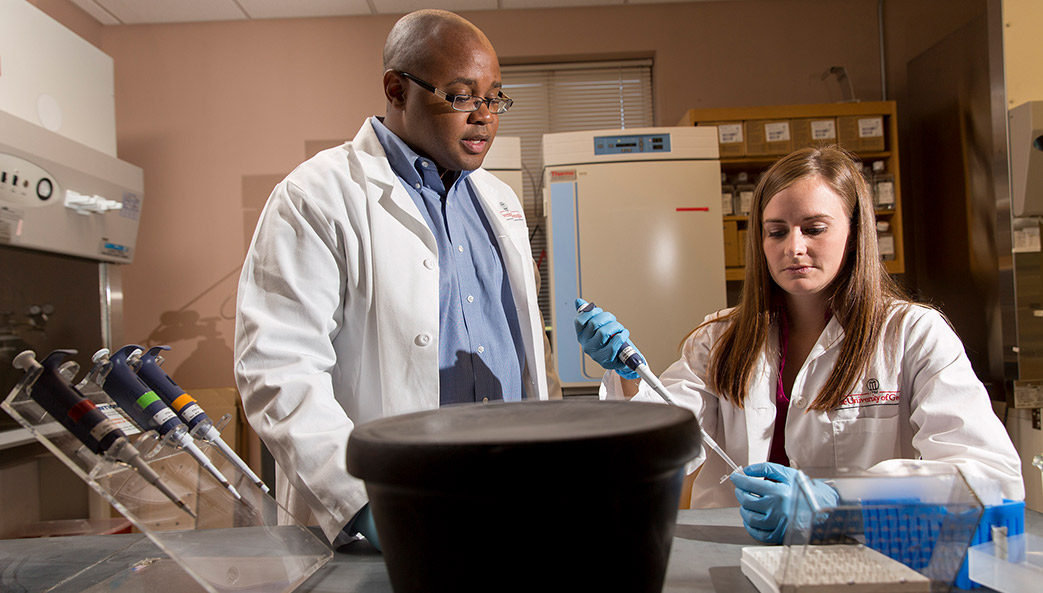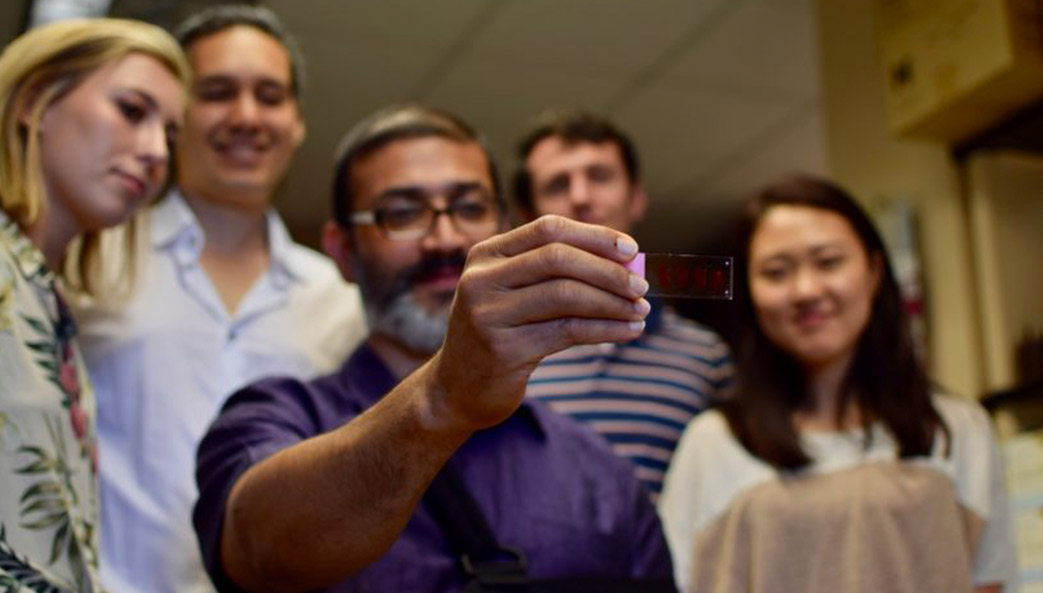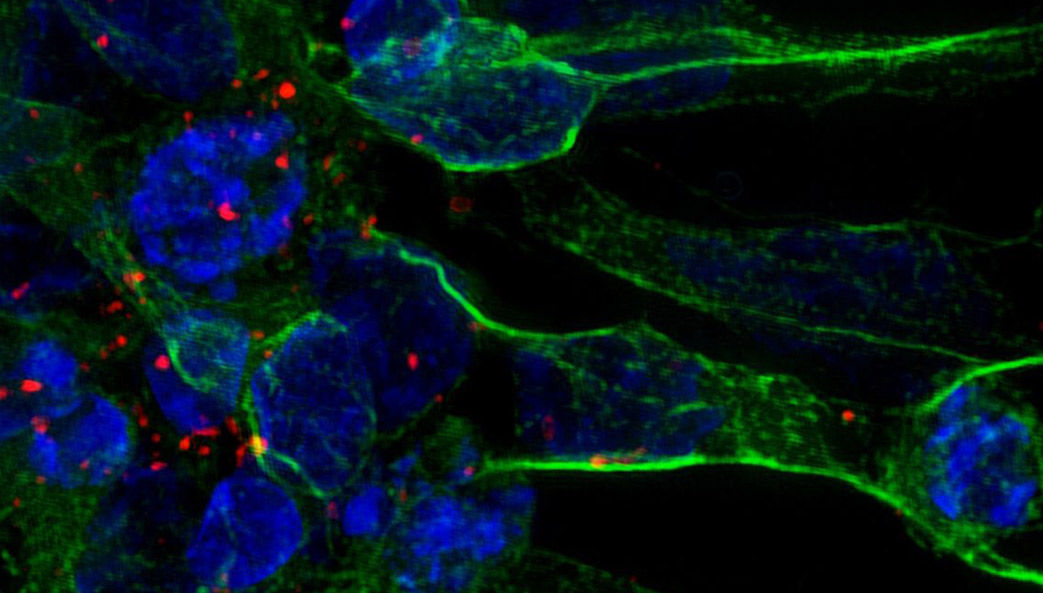Researchers at UGA’s Regenerative Bioscience Center have developed the first U.S. pig model for stroke treatments, an advance that will provide essential preclinical data and speed the drug discovery process.
Pig-derived medical products have a long history of use in humans. Pig heart valves are used to replace damaged or diseased human valves, diabetics may use insulin taken from pigs, and the blood-thinning drug heparin was first derived from a pig. In addition, pig brains have physiological and anatomical similarities to human brains.
“This is the first time that a neural stem cell therapy has been tested in a large animal model with a brain more similar to humans,” says Emily Baker, lead author, who earned a doctorate in neuroscience at UGA. “With greater predictive capabilities, there’s a better likelihood of it working in a human.”
Using their model, the team has shown that induced neural stem cells, or iNSCs, can replace stroke-damaged brain tissue and stimulate neuroplasticity—the brain’s ability to naturally repair itself.
“Compared to mice, our large animal stroke model is a more rigorous test of potential therapeutics with findings that are likely more clinically relevant,” says Franklin West, senior author and associate professor in the College of Agricultural and Environmental Sciences.
Stroke is the cause of one in every 19 U.S. deaths, and in 2015, stroke deaths accounted for nearly 12 percent of total deaths worldwide, making stroke the second leading global cause of death, according to the American Heart Association/American Stroke Association. But almost all clinical trials of neuroprotective therapies have failed to translate from the laboratory to the clinic, according to the RBC research team.
Stroke therapies that worked on small animals, such as mice, more often than not proved ineffective in human strokes. The concept of neuroprotection and the inability to demonstrate a regenerative action to restore and replace brain tissue has been the focus of intense research.
The RBC team used the pig model to more precisely establish the repair mechanism by which stem cells work in neural tissue regeneration and neuroprotection.
“The takeaway from this work is that the injected stem cells led to cellular and tissue improvement,” West says. “If you have a stroke and you get this treatment, fewer neurons are going to die, and for stroke research that’s critically important.”
The findings from the study, published online in the journal Scientific Reports, suggest that there are peripherals of salvageable brain tissue that would benefit from cell-based restorative therapies after acute ischemic stroke, specifically iNSCs that naturally promote brain plasticity and recovery.
In collaboration with Emory University and UGA’s College of Veterinary Medicine, the team’s work shows improved recovery in so-called white matter, the “superhighways of connectivity” that connect key centers of the brain.
RBC researchers are using this model as a platform for developing stroke therapies based on nanotechnology. The goal is to replace lost brain tissue and neural systems that are gone, enabling patients to regain mobility and to feed and dress themselves.
If they can do that, West says, “in the bigger picture, what we’ll have done is improve the quality of life.”
This story appeared in the spring 2018 issue of Research Magazine. The original press release is available at https://news.uga.edu/new-livestock-model-for-stroke/.






